Chicken Rollatini is a timeless Italian dish loved for its rich flavors, cheesy goodness, and versatility. Perfect for a cozy family dinner or a fancy gathering, this dish brings the comfort of home-cooked meals with a gourmet twist. In this article, we’ll take a deep dive into everything you need to know about chicken rollatini—its origins, preparation, variations, and more. Whether you’re a seasoned cook or a beginner in the kitchen, this guide will help you master the art of making this delightful dish.
Table of contents
What is Chicken Rollatini?
Introduction to Chicken Rollatini
Chicken Rollatini is a classic Italian dish consisting of thin chicken cutlets rolled around a savory filling, often including cheese, herbs, and vegetables. These flavorful rolls are typically baked or pan-fried and served with a sauce, making them a crowd-pleaser at any meal. The dish is known for its versatility, allowing home chefs to get creative with ingredients while sticking to its essential comforting elements.
History and Origins of the Dish
Hailing from the heart of Italian cuisine, chicken rollatini is inspired by the traditional “involtini,” which means “little rolls” in Italian. Historically, involtini were made using veal or beef, but chicken became a popular choice due to its affordability and mild flavor. Over time, the dish evolved, with each region of Italy adding its unique twist, resulting in the modern versions we enjoy today.
Why It’s Loved: Flavor and Versatility
What makes chicken rollatini a standout is its ability to cater to various tastes. Whether stuffed with gooey mozzarella, sautéed spinach, or smoky pancetta, each bite bursts with flavor. Its adaptability means you can go traditional or put your spin on it, creating endless possibilities for a meal that’s both satisfying and memorable.
Ingredients Needed for Chicken Rollatini
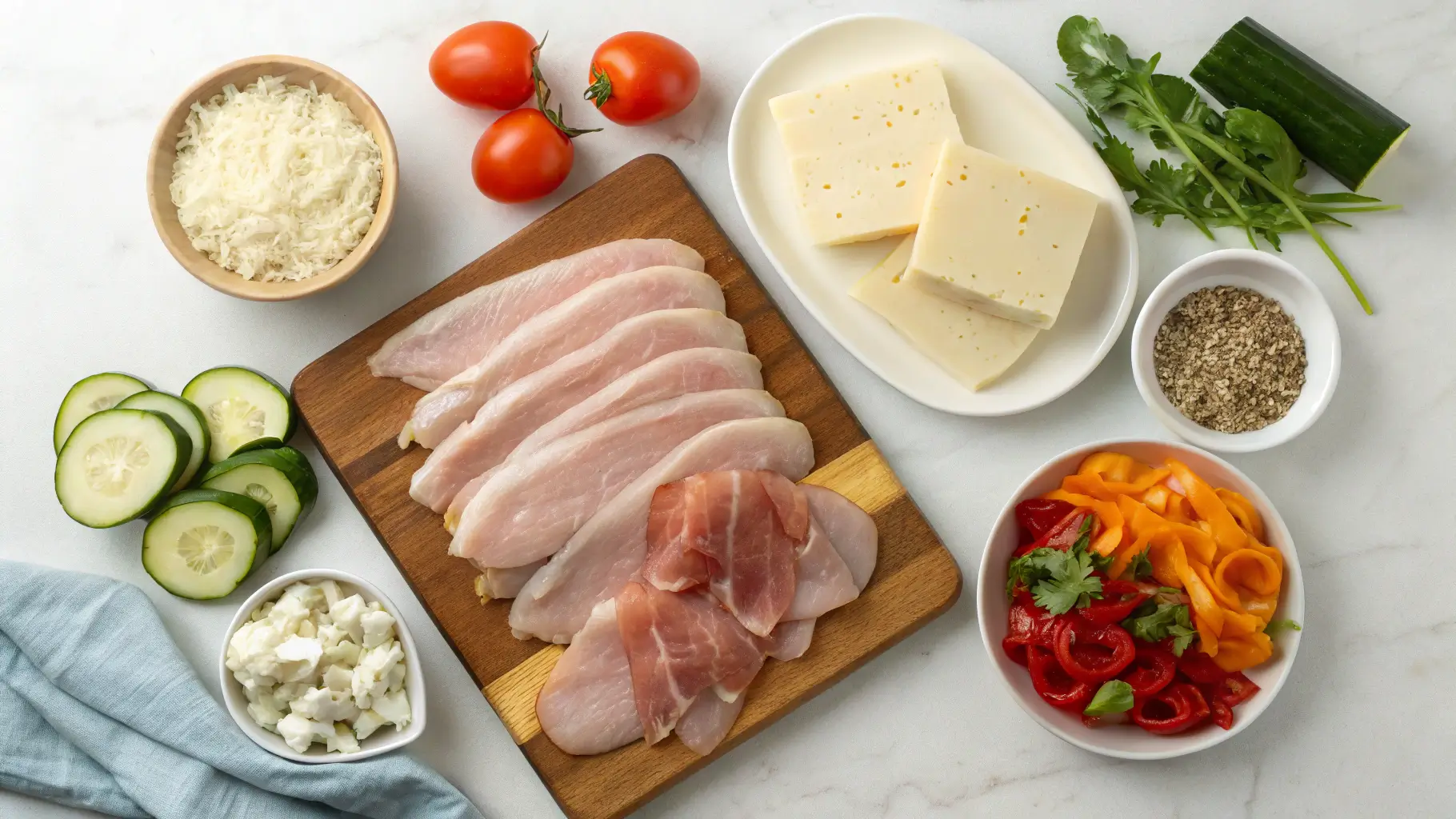
Key Ingredients: Chicken, Cheese, and More
To make the perfect chicken rollatini, you’ll need a mix of fresh and flavorful ingredients. The primary component is thinly sliced chicken cutlets, which serve as the base for the dish. The stuffing often includes cheeses like mozzarella, provolone, or Parmesan to add a rich, creamy texture. For an added kick of flavor, prosciutto or pancetta is commonly used. Garlic, olive oil, and fresh herbs like parsley or sage are essential for seasoning and enhancing the dish’s aroma.
Optional Ingredients for Variations
What makes chicken rollatini so versatile is its ability to adapt to different tastes. Want a healthier option? Swap traditional breadcrumbs for almond flour. Prefer a vegetarian twist? Incorporate spinach or artichokes in the stuffing. You can even experiment with cheeses like goat cheese or ricotta for a creamier filling. Adding white wine or chicken broth to the sauce can elevate the dish further.
Tips for Choosing Fresh and High-Quality Ingredients
To ensure your chicken rollatini is top-notch:
- Use fresh chicken cutlets from a reputable source.
- Opt for freshly grated cheeses instead of pre-packaged varieties for better flavor.
- Look for high-quality cured meats like prosciutto or pancetta to complement the dish’s creamy interior.
- Choose cold-pressed extra-virgin olive oil for a robust, authentic taste.
Step-by-Step Recipe for Classic Chicken Rollatini
1. Preparation: Gathering Tools and Ingredients
Before diving into the recipe, preparation is key to ensuring success with chicken rollatini. Start by preheating your oven to 375°F (190°C), a temperature ideal for evenly cooking the chicken without drying it out. Next, gather all the necessary tools:
- A meat mallet for pounding the chicken to a uniform thickness, ensuring even cooking.
- Toothpicks or kitchen twine to secure the rolls and prevent them from unrolling during cooking.
- An ovenproof skillet or baking dish to move seamlessly from stovetop to oven.
- A sharp chef’s knife for trimming the chicken and slicing the rolls for serving.
Having these tools and ingredients ready streamlines the cooking process, reducing stress and making the experience more enjoyable.
2. Filling and Rolling the Chicken
To make perfect chicken rollatini, start with high-quality chicken cutlets. Lay them on a clean surface and cover them with plastic wrap before pounding them to an even thickness of about 1/4 inch. This step is crucial as it ensures the chicken cooks evenly and is easier to roll.
Season each cutlet with salt and freshly ground pepper for a well-balanced base flavor. Next, layer your chosen fillings. Traditional options include mozzarella cheese for creaminess, thin slices of prosciutto for a salty depth, and fresh herbs like parsley for an aromatic touch. For added richness, sprinkle a little Parmesan cheese over the top.
Carefully roll each cutlet starting from one end and tucking the filling in as you go. Secure the roll with toothpicks or tie it gently with kitchen twine. Avoid overstuffing, as this can cause the roll to burst while cooking.
3. Cooking Techniques: Baking vs. Pan-Frying
When it comes to cooking chicken rollatini, the method you choose depends on your preference for texture and health-consciousness.
- Baking: For a healthier option, preheat your oven and place the rolls in a greased baking dish. Add a splash of white wine, chicken broth, or marinara sauce to the bottom of the dish. This liquid not only keeps the chicken moist but also creates a flavorful sauce as it cooks. Bake for 25–30 minutes, or until the internal temperature reaches 165°F (74°C). Cover the dish with foil for the first half of the cooking time to prevent the rolls from drying out.
- Pan-Frying: For a crispier exterior, heat olive oil in an ovenproof skillet over medium heat. Sear each roll on all sides until golden brown, about 2–3 minutes per side. Then, transfer the skillet to the oven to finish cooking. This method creates a beautiful caramelized crust while ensuring the chicken remains juicy inside.
For added flavor, deglaze the skillet with wine or broth after removing the rolls, scraping up the browned bits to make a quick and delicious pan sauce.
If you want to discover some breakfast recipes, check out our trendy Cottage Cheese Egg Bake.
Serving Suggestions and Plating Tips
Once your chicken rollatini is cooked to perfection, remove the toothpicks or twine carefully before plating. Arrange the rolls neatly on a serving platter or individual plates. Drizzle the pan juices or sauce over each roll for an added burst of flavor.
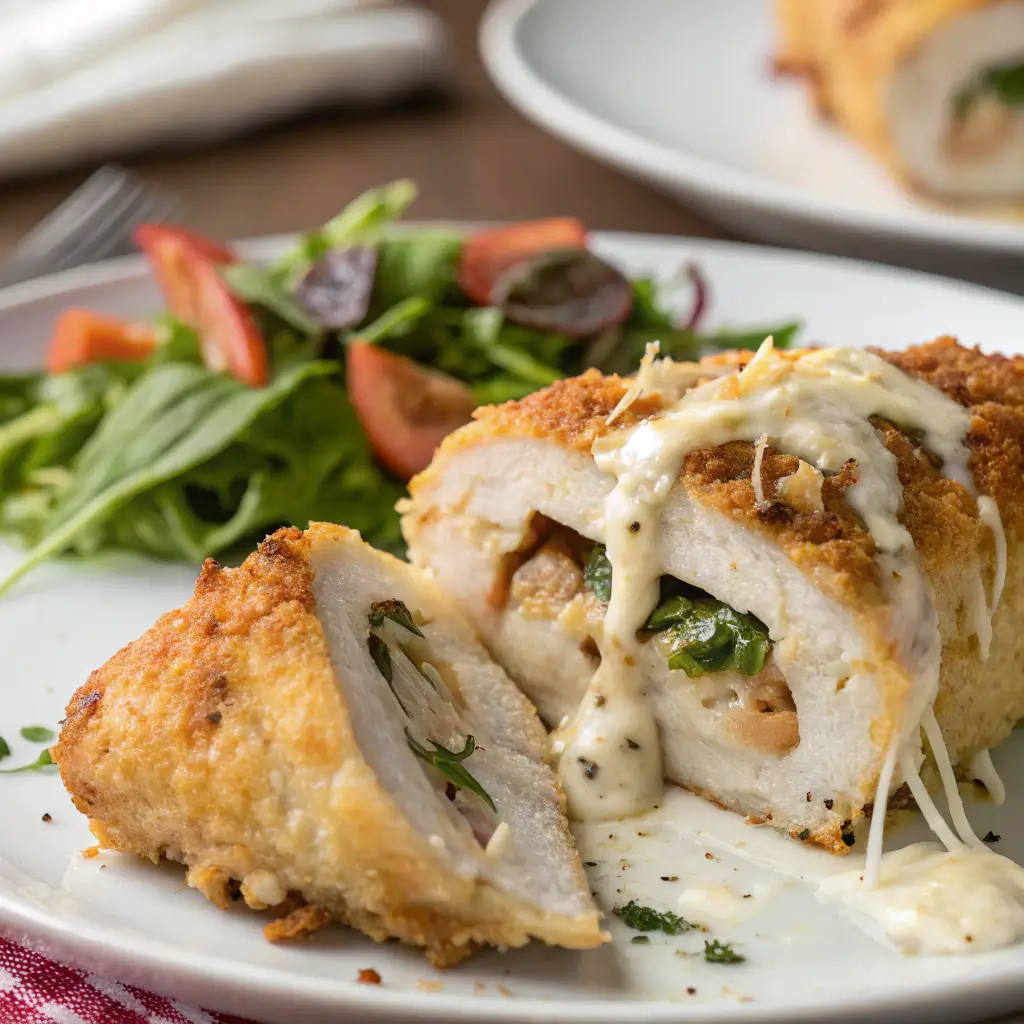
For an elegant presentation, slice the rolls diagonally to showcase the filling and serve them alongside complementary sides:
- Vegetables: Roasted asparagus, garlic green beans, or sautéed spinach make excellent pairings.
- Starches: Serve with creamy mashed potatoes, risotto, or a slice of crusty garlic bread to soak up the sauce.
- Salads: A crisp Caesar salad or a refreshing tomato and cucumber salad adds a light and vibrant contrast.
To make the meal even more special, garnish with fresh herbs like parsley or basil and a sprinkle of Parmesan cheese. The result is a dish that’s not only delicious but visually stunning—perfect for impressing guests or enjoying a quiet family dinner.
Popular Variations of Chicken Rollatini
Chicken Rollatini Alfredo: A Creamy Twist
For fans of rich and indulgent dishes, Chicken Rollatini Alfredo is a dream come true. This variation swaps traditional tomato-based sauces for a creamy Alfredo sauce, adding a luxurious touch to the dish. The chicken is stuffed with mozzarella or Parmesan cheese and rolled with herbs like parsley or basil for added flavor. To top it off, the Alfredo sauce coats the rolls, creating a velvety texture that pairs beautifully with pasta or steamed vegetables.
Low-Carb Chicken Rollatini with Zucchini
If you’re looking for a healthier alternative, try a low-carb version of chicken rollatini. Instead of breadcrumbs, use thinly sliced zucchini or almond flour as the breading substitute. This variation is perfect for keto enthusiasts and those aiming to reduce their carb intake. The zucchini adds a mild, fresh flavor while keeping the dish light. Serve it with a crisp salad or roasted asparagus for a complete, guilt-free meal.
Spinach and Cheese Stuffed Chicken Rollatini
For a classic take, spinach and cheese make an unbeatable filling combination. The creamy cheese, often ricotta or goat cheese, pairs perfectly with the slightly bitter spinach. This version is not only delicious but also packs a nutritional punch, thanks to the added greens. Finish the dish with marinara sauce or a splash of white wine for an extra layer of flavor.
Health Benefits and Nutritional Information
Caloric Content and Macronutrient Breakdown
Chicken rollatini is a protein-packed dish that can be tailored to fit various dietary needs. A standard serving contains about 300–500 calories, depending on the filling and cooking method. It provides a healthy dose of lean protein from the chicken and essential fats from cheese and olive oil. For those watching their sodium intake, opting for low-sodium cheeses and skipping pancetta can make it even healthier.
Healthy Substitutions for a Lighter Dish
There are plenty of ways to make chicken rollatini lighter without sacrificing flavor. Instead of frying, bake the rolls with a light coating of olive oil. Use low-fat cheeses or reduce the quantity to cut down on calories. Adding more vegetables, such as bell peppers or mushrooms, can increase fiber content and make the dish more filling.
Pairing Chicken Rollatini with a Balanced Diet
To create a well-rounded meal, pair your chicken rollatini with nutrient-dense sides. Roasted vegetables, quinoa, or a fresh green salad are excellent options that complement the dish without overpowering its flavors. For a heartier meal, whole-grain pasta or brown rice can provide additional fiber and energy.
Tips and Tricks for Perfect Chicken Rollatini
Avoiding Common Mistakes
To make the best chicken rollatini, avoid some common pitfalls. One major issue is unevenly flattened chicken, which can lead to undercooked or overcooked spots. Use a meat mallet to ensure an even thickness. Additionally, overfilling the rolls can cause them to burst during cooking. Stick to a modest amount of stuffing for a secure roll. Lastly, if you’re frying the rolls, make sure the oil is hot enough to prevent sticking but not so hot that the exterior burns before the chicken is fully cooked.
Enhancing Flavor with Herbs and Spices
Spices and herbs can elevate your chicken rollatini to the next level. While salt and pepper are essential, consider adding Italian seasoning, smoked paprika, or crushed red pepper flakes for extra depth. Fresh herbs like parsley, basil, or oregano can brighten the dish, while garlic and lemon zest bring a zesty aroma that complements the cheese and chicken perfectly.
How to Make It Ahead and Store Properly
Planning to serve chicken rollatini for a special occasion? You can prepare the rolls in advance! Assemble the stuffed chicken, wrap them tightly, and refrigerate for up to 24 hours. When you’re ready to cook, proceed with baking or frying. Leftovers can be stored in an airtight container in the fridge for up to 3 days. To reheat, place the rolls in a preheated oven at 350°F to maintain their crispy exterior without drying them out.
FAQ Section About Chicken Rollatini
What Side Dishes Go Best with Chicken Rollatini?
Chicken rollatini pairs wonderfully with a variety of sides. Garlic mashed potatoes, roasted Brussels sprouts, or a fresh Caesar salad are great options. For a lighter meal, try steamed broccoli or a tangy tomato and cucumber salad. If you’re hosting a dinner, serve it alongside crusty garlic bread to soak up any delicious sauces.
Can I Make Chicken Rollatini Gluten-Free?
Yes, you absolutely can! For a gluten-free version of chicken rollatini, substitute regular breadcrumbs with gluten-free breadcrumbs or almond flour. Be sure to check the labels of your cheese and cured meats to ensure they’re gluten-free. Serve it with gluten-free pasta or rice for a complete meal.
How Do I Prevent the Chicken from Drying Out?
Preventing dryness starts with choosing fresh, high-quality chicken. Flatten the cutlets evenly, and avoid overcooking. When baking, cover the dish with foil for the first half of the cooking time to lock in moisture. Adding a splash of broth or wine to the baking dish can also keep the chicken juicy and flavorful.
Exploring the Cultural Significance of Chicken Rollatini
Chicken Rollatini in Italian Cuisine
Chicken rollatini has its roots in Italy, where the tradition of creating rolled dishes, known as “involtini,” has been a long-standing culinary practice. While the classic version often used veal, chicken became a popular substitute due to its accessibility and adaptability. In Italian households, rollatini symbolizes comfort and the joy of sharing meals with family. The dish is often served during festive occasions, embodying the essence of Italian hospitality.
How It Has Gained Popularity Globally
Over the years, chicken rollatini has transcended its Italian origins, becoming a beloved dish worldwide. Its universal appeal lies in its versatility—chefs and home cooks alike can experiment with fillings and sauces to suit local tastes. In America, for instance, variations like Chicken Rollatini Alfredo and spinach-stuffed rollatini have become household favorites. Food bloggers and cooking shows have also played a role in popularizing the dish, showcasing its gourmet look and simple preparation.
Modern Takes on a Traditional Dish
Today, chicken rollatini continues to evolve with modern culinary trends. From low-carb adaptations using zucchini to vegan versions with plant-based alternatives, the dish reflects the growing demand for health-conscious and inclusive dining options. Restaurants and home kitchens alike celebrate its elegance and ease, ensuring chicken rollatini remains a timeless classic for generations to come.

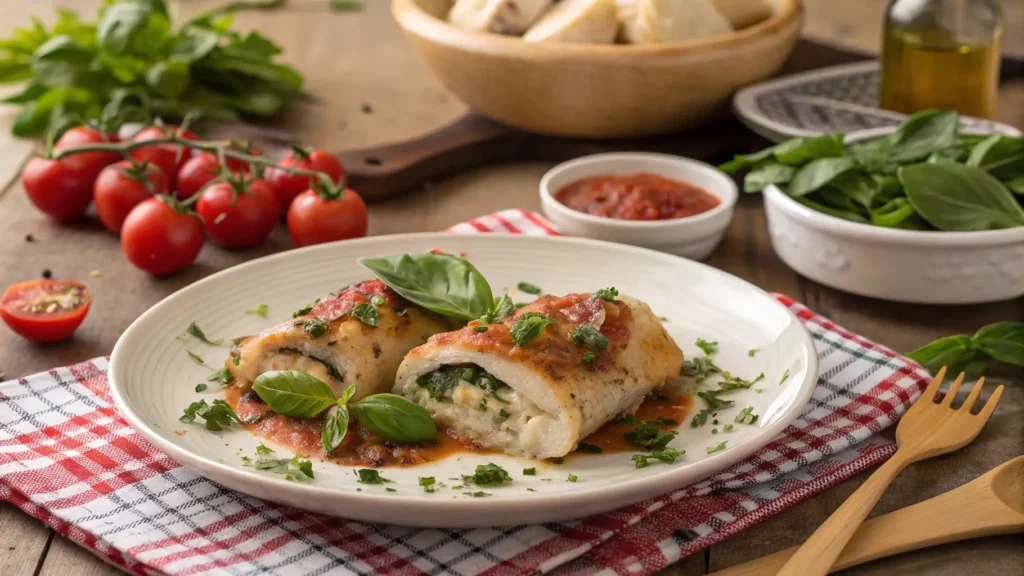
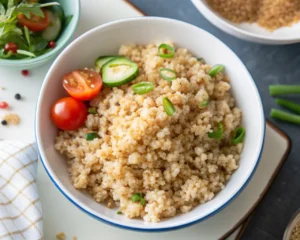
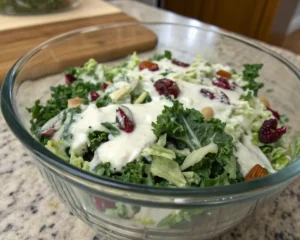
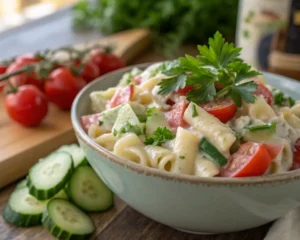
1 thought on “Italian Chicken Rollatini Recipe”